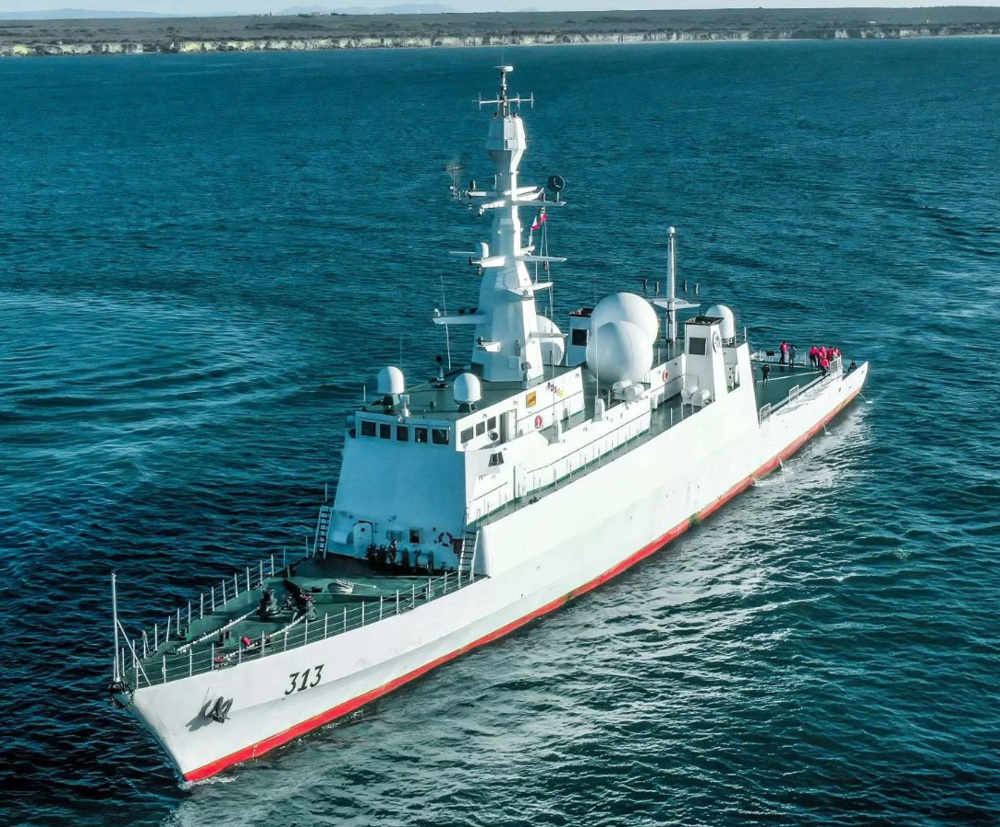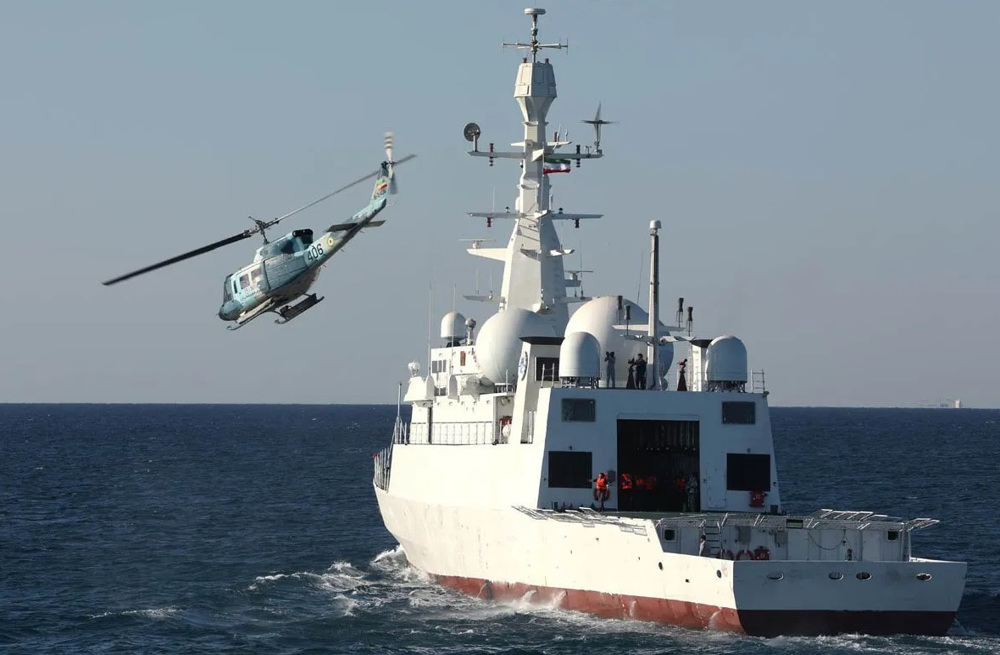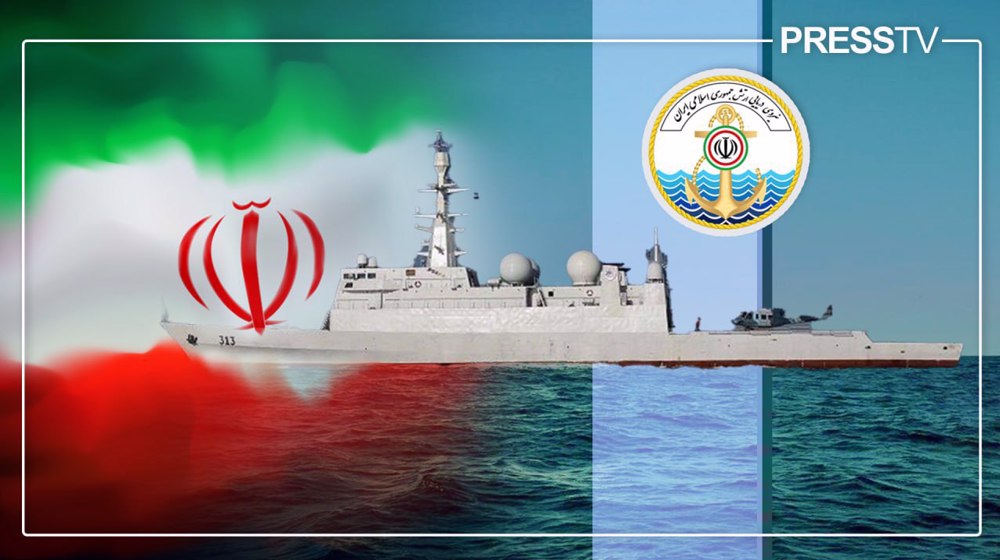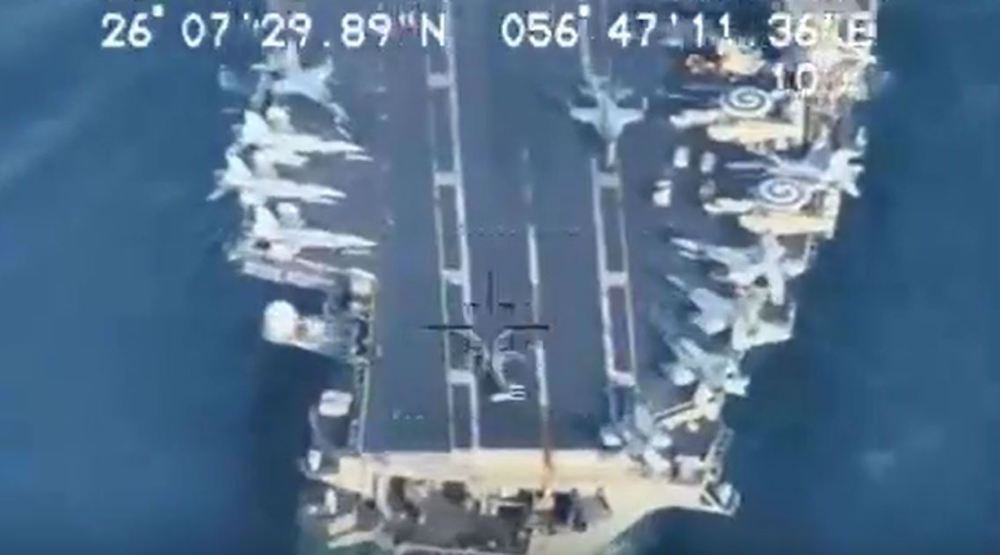Explainer: Why is Iranian Navy's first big intel-gathering warship Zagros significant?
By Ivan Kesic
The latest Iranian warship Zagros is the first large intelligence-gathering vessel and a new military asset that has strengthened the Iranian Navy's capabilities in electronic warfare.
On Wednesday, the Iranian naval defense industry delivered the first domestically produced signals intelligence (SIGINT) warship Zagros to the country’s naval forces.
The vessel was handed over during the opening ceremony of the new naval base in Jask on the coast of the Gulf of Oman, the home port for future SIGINT operations.
The ceremony was attended by Navy Commander Rear Admiral Shahram Irani, Chief of Staff of the Iranian Armed Forces Major General Mohammad Baqeri, other senior military and government officials, as well as engineers and scientists.
Irani described Zagros as the "vigilant eye of the Navy within the depth of the world's seas and oceans," praising the achievement as very valuable for the country's armed forces,
Commenting on the Jask naval base development, he said that the equipment allocated to this region includes surface, subsurface, and unmanned manned and unmanned flying vehicles.
The inauguration of this warship is part of the modernization of the Iranian fleet, strengthening the field of intelligence-gathering and deterrence of potential adversaries, with an emphasis on strengthening its role in the Indian Ocean and the world's seas.
What are the warship's specifications?
Zagros is the sixth ship of the Mowj-class (Wave-class) warships, variously classified as a destroyer or frigate, out of a total of seven that have been planned.
These warships are produced by the Naval Factories shipyard in Bandar Abbas, as well as the Shahid Tamjidi shipyard in Bandar Anzali for the northern Caspian fleet.
The Mowj-class vessels have a displacement of 1,500 tons and are the largest class of domestic warships, after the converted forward base ship Makran and drone carrier Shahid Bagheri.

They have a length of 94 m, a beam of 11.1 m, a draft of 3.25 m, a speed of 30 knots (56 km/h), and generally carry 120-140 personnel on board, although due to their specific purpose, the Zagros' crew is probably half that size.
Previous vessels of the class are powered by two 10,000 hp (7,500 kW) engines and four Iranian-made 740 hp (550 kW) diesel generators that provide auxiliary power, and it is unknown whether the Zagros uses anything more powerful.
SIGINT vessels generally require stronger power-generation capabilities due to operating electronic intelligence (ELINT) sensors and their subsystems.
The Iranian choice of this warship class surprised many observers, given that most world's navies use commercial hulls for SIGINT vessels.
Commercial designs or specifications are more spacious for equipment and simpler to build and operate, but much more vulnerable in combat circumstances.
What equipment does it use?
Zagros SIGINT warship possesses advanced capabilities in electronic warfare and intelligence, more precisely sensors to intercept, collect, decrypt and analyze radio-frequency signals from hostile or potentially hostile emitters.
These enable the Iranian Navy to detect and counter enemy operations in the region, far from Iranian soil where numerous SIGINT stations already operate, particularly in the Indian Ocean and beyond.
Iran has demonstrated blue water capabilities in recent years, circumnavigating the globe with its navy, which means that the Zagros, as part of that fleet, will be able to operate in every corner of the world.
It is expected that Zagros operations will be focused on monitoring US Navy aircraft carrier groups and malicious naval missions by the Israeli regime.

Technical specifications on sensors and other Zagros equipment are currently unavailable, but some details can be inferred based on published photos and videos.
The main antennas of Zagros are housed in three large radomes (radar domes), and at the corners of the superstructure, four smaller radomes likely house satellite communications systems.
At the top of the ship's mast, above the naval radar, an Afaq electronic warfare jamming communication station was spotted, first shown at military exercises three years ago.
The warship also reportedly has the ability to conduct cyber defense missions against digital threats, but no specific details were officially provided.
Unlike other vessels in the class, Zagros does not have any standard armament, such as a forward 76 mm Fajr-27 naval gun, Fath-40 or Kamand close-in weapon systems, Mehrab air defense missiles, Noor or Qader anti-ship missiles, and torpedoes.
Another difference from them is that Zagros has a flight deck with the addition of a hangar, able to accommodate a helicopter, an unusual feature of a SIGINT ship.
This suggests that the Zagros can play multi-role operations, especially in anti-submarine warfare, for which the AB212 helicopters are equipped.
There is a possibility that Zagros will be armed in the foreseeable future, although its escorts are actually responsible for combat missions.
In the newly opened Jask naval base, as part of the second naval zone (code-named Velayat), Kaman- and Sina-class fast attack craft, a Ghadir-class submarine, and the warship Dena were also seen.
VIDEO | Germany considers Tunisia for migrant 'return center' plans
VIDEO | UK protesters show solidarity with Palestinians at Christmas
VIDEO | UK digital ID cards spark debate over immigration control, security
VIDEO | Press TV's news headlines
US advised to respect Iranian people, their elected establishment: FM
Trump admin. asks transportation body to share passenger names in expanded deportation push: Report
UN sounds alarm over record Palestinian displacement, surge in illegal settler attacks in West Bank
Iran emerges as global fertility hub, blending innovation, research and scientific excellence














 This makes it easy to access the Press TV website
This makes it easy to access the Press TV website